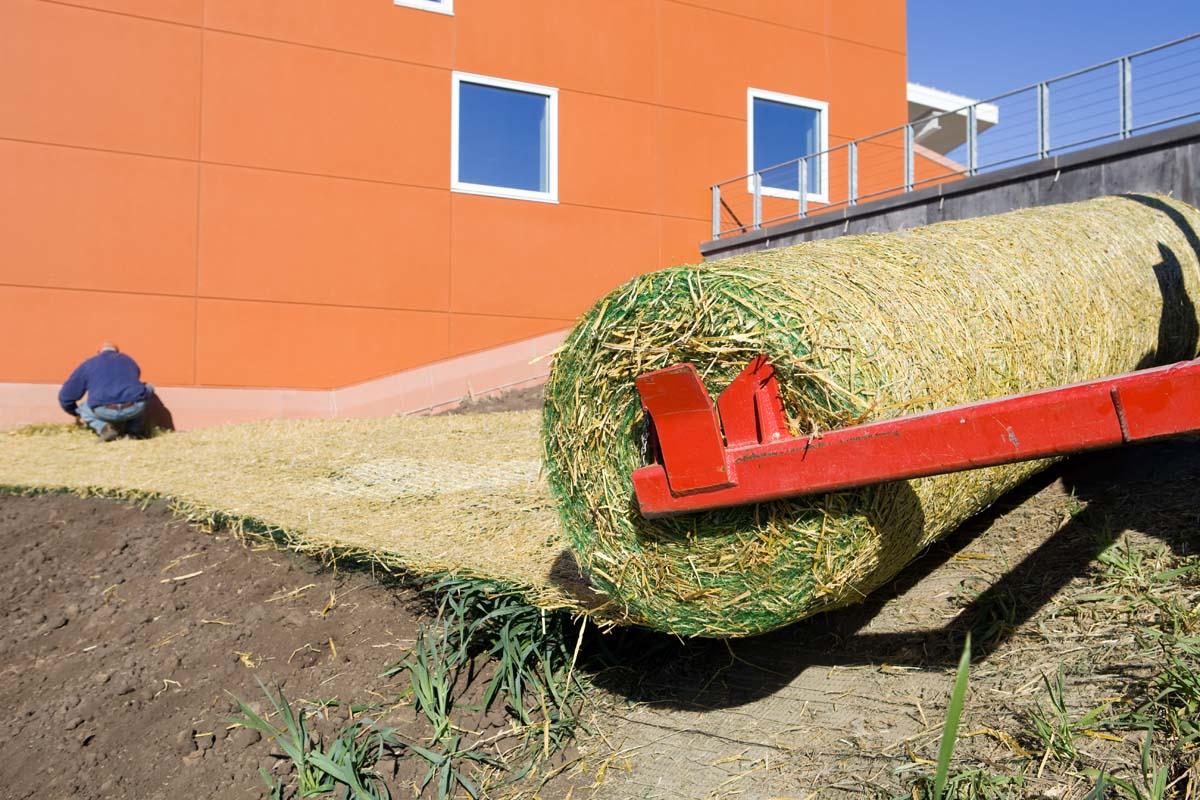Memphis Erosion Control Solutions Memphis TN: Your Local Erosion Control Professionals
Wiki Article
Best Practices for Erosion Control in Building Projects
Are you functioning on a building and construction task and concerned about disintegration control? In this post, we will guide you via the ideal methods for stopping erosion on your site. silt fences. Obtain prepared to take on erosion head-on and guarantee the success of your construction job.5 Crucial Disintegration Control Strategies
To efficiently regulate disintegration on your building site, you'll need to execute crucial methods such as slope stablizing and debris control actions. Slope stablizing is vital in avoiding soil disintegration on high inclines. Another reliable technique is the use of disintegration control coverings or floor coverings, which are placed on the incline and aid retain dirt fragments while permitting vegetation to grow.
Effective Sediment and Drainage Monitoring

You can successfully manage debris and runoff in your building and construction project by applying proper erosion control steps. Debris and runoff administration is crucial to stop erosion and safeguard the surrounding setting. One reliable procedure is the installment of silt fencings along the boundary of the construction website. These fencings assist to contain debris and prevent it from entering neighboring water bodies. An additional vital practice is the implementation of erosion control blankets or floor coverings. These blankets supply a safety layer on bare dirt, minimizing the impact of rains and protecting against disintegration. Additionally, making use of debris basins or debris traps can help to record debris and avoid it from going into stormwater systems. Regular maintenance of these procedures is vital to ensure their effectiveness throughout the construction task. This includes cleansing and inspecting sediment basins and regularly replacing silt fences and disintegration control coverings as needed. By implementing these erosion control steps, you can successfully handle debris and drainage in your construction task, reducing the influence on the setting and adhering to governing demands.
Secret Considerations for Slope Stablizing
You require to carefully examine the incline's qualities, such as its water drainage, structure, and angle patterns. Look for indicators of disintegration, such as exposed origins, fractures, or slumping soil.An additional option is to grow vegetation on the incline, as the origins can aid secure the soil and control erosion. In addition, setting up erosion control blankets or mats can give prompt protection while plant life ends up being well-known.
It's vital to consistently keep track of the maintained slopes to guarantee their effectiveness. Keep an eye out for any kind of indications of activity or erosion, and take prompt activity if needed. Normal maintenance, such as examining and repairing any type of broken procedures, is additionally important to make sure long-lasting security.
Best Practices for Plant Life and Dirt Defense
One effective means to shield vegetation and soil on inclines is by regularly inspecting for indicators of erosion and taking instant activity if necessary. Begin by evaluating the incline for any type of indications of erosion, such as subjected origins, bare dirt patches, or sediment buildup at the bottom. Implement disintegration control steps such as setting up erosion control blankets, mulching, or also building preserving wall surfaces if needed.Applying Correct Drain Equipments
To successfully implement appropriate water drainage systems, it's vital to consider the slope gradient and soil kind. When it involves taking care of water circulation and avoiding disintegration, understanding these variables is vital. The incline gradient plays a considerable function in establishing just how water crosses the land. Steeper inclines can lead to much faster water circulation, raising the risk of disintegration and flooding. On the various other hand, gentler inclines permit water to move more slowly, reducing erosion potential. grasshopper landscaping By evaluating the incline gradient, you can create a reliable water drainage system that fits the natural water useful source activity.Soil kind also influences water drainage system style. Different dirt kinds have varying degrees of leaks in the structure, impacting how water is soaked up and drained pipes. For example, sandy dirts have a tendency to drain faster as a result of their rugged texture, while clay dirts have a slower drain rate as a result of their small nature. Comprehending the soil type helps in choosing suitable drain methods, such as making use of permeable products or setting up French drains pipes. In addition, taking into consideration the soil characteristics assists prevent waterlogging, which can bring about poor plant development and damage to frameworks.
Conclusion
To conclude, when it comes to erosion control in construction tasks, you should follow these best techniques. Carry out efficient debris and overflow administration strategies to avoid air pollution. Consider slope stablizing approaches to ensure the stability of the site. Shield plants and dirt by utilizing appropriate steps. Finally, develop correct drainage systems to manage water flow. By adhering to these essential methods, you can properly control erosion and make certain the success of your construction job.To efficiently control erosion on your construction website, you'll require to carry out necessary methods such as slope stablizing and sediment control measures. Incline stablizing is vital in protecting against dirt disintegration on high slopes. One more effective strategy is the usage of erosion control coverings or floor coverings, which are put on the slope and help retain dirt bits while enabling greenery to expand. One more choice is to plant plants on the incline, as the roots can assist learn this here now secure the soil and control disintegration. Implement erosion control steps such as setting up disintegration control coverings, mulching, or also creating retaining walls if required.
Report this wiki page